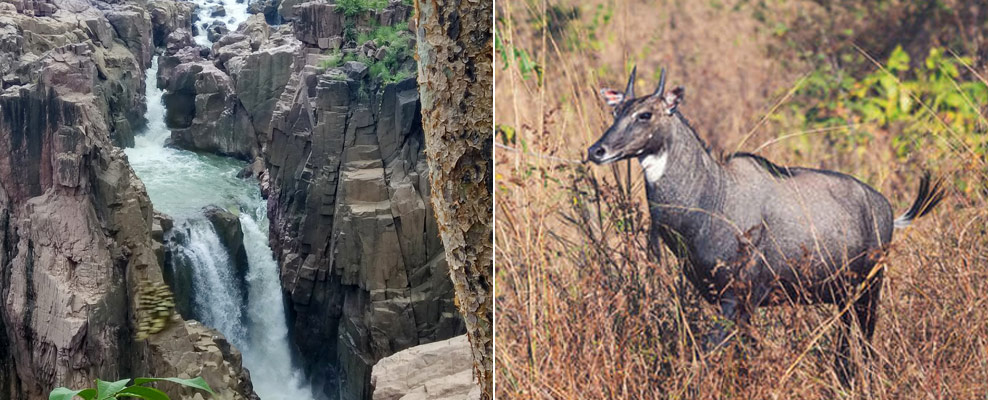
WoT's Hot
It’s hard to imagine right now that exactly a month ago, I was standing in front of the Grand Canyon. All right, not the Grand Canyon that you’ve probably heard of, but the one closer home, the one you may not have heard of −in the Chhatarpur district of Madhya Pradesh – Raneh Falls.
RanehFalls, is a hidden gem like countless otherlesser known spots in our country and is often compared to the Grand Canyon of Arizona. The best way and opportunity to visit it is to club it with a trip to Khajuraho, since the Falls are only about 20 km from there.
The drive to Raneh, cutting through unspoilt villages is idyllic and charming. Though the roads are perfectly fine, we advise our driver to go slowly(without blowing the horn) so as to gaze a tad longer and soak in the many mustard (sarson) and wheat (genhu) fields we pass. Luckily for us, the mustard is in full bloom. Fresh air and narrow strips of roads swooping up and down make for great shots until we reach Raneh Falls.
Raneh, which some suggest was also called Sneh Falls before colonization, are natural waterfalls on the Ken River, which again was originally called the Karnavati River.Post alighting our car and purchasing a mandatory entry ticket, a short walkalong a designated pathway brings us to the vantage point of the falls and the 5km long canyon. The sight is simply stunning. There are a series of big and small waterfalls and the many millions of year old canyon, looming large. Made up of five types of igneous rocks – the black basalt and the pink granite, the canyon also has the uncommon red jasper, brown quartz and green dolomite. All in all, it is at once a geologist’s and photographer’s paradise.

Within the precincts of the Raneh Falls, is also the Ken Gharial Sanctuary where we chance a sighting of a lot of male antelopes, also called the neelgaiand catch migratory Siberian birds sitting perched in a flock atop a rock on the river.

If Raneh Falls are a spectacular sight, Pandav Falls, in the Panna Tiger Reserve of Madhya Pradesh are both alluring and historically significant. Named after the five Pandavs of Mahabharat, who took refuge there, supposedly in their final year of exile, the Pandav Falls looked a bit busier than their neighbours. And with good reason – the Pandav Falls are a mix of cascading waterfalls, a sparkling fish filled lake formed from natural spring water all around, caves and lush greenery.
A 600 metre walk followed by a flight of 300 odd steps takes us down all the way till we’re at the level of the lake and the caves. It is there, that the waterfalls, one after the other, create a shower curtain like ambience, filled with the most soothing symphony of gushing water.
The caves, long abandoned ofcourse, are now home to wild bears and catsthat home in to escape the heat. The caves are filled with limestone stalagmite and stalactite formations and are a chosen spot for the wild, as they also have a ready watering hole in the lake. We also crossedArjun trees that had distinct bear claw marks and our guide explained that the bears climbed up these trees, in quest of fresh honey. Unlike the Raneh Falls which are closed during the monsoons, the Pandav Falls remain open throughout the year, barring their weekly closure on Wednesdays.
As we made our way back to the car, I also noticed a statue, dedicated to the late Chandrashekhar Azad, who had chosen this spot to hold a secret meeting way back in 1929 with fellow freedom fighters. The statue was erected in 2010.
It’s hard to imagine right now that exactly a month ago, I was standing in front of the Grand Canyon. All right, not the Grand Canyon that you’ve probably heard of, but the one closer home, the one you may not have heard of −in the Chhatarpur district of Madhya Pradesh – Raneh Falls.
RanehFalls, is a hidden gem like countless oth
Other Articles in Wots Hot
What to read next
Featured articles

Welcome Festive Season in Glam, Latin Quarters Launches new #PujoBling Collection with Monami Ghosh
by WOT








































